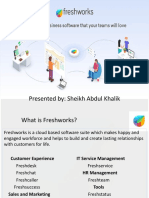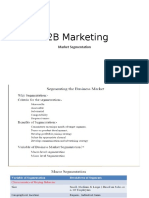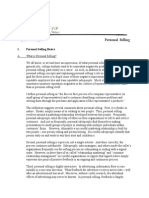0% found this document useful (0 votes)
601 views8 pagesDell - Selling Process and Lead Generation
Dell has become a market leader in personal computers through innovative selling processes and a direct sales model. Dell sells directly to customers, allowing them to customize configurations. This reduces costs and increases profits compared to competitors. Dell also uses the internet and social media like Twitter effectively to generate leads and sales.
Uploaded by
Abhishek MandaviyaCopyright
© © All Rights Reserved
We take content rights seriously. If you suspect this is your content, claim it here.
Available Formats
Download as DOCX, PDF, TXT or read online on Scribd
0% found this document useful (0 votes)
601 views8 pagesDell - Selling Process and Lead Generation
Dell has become a market leader in personal computers through innovative selling processes and a direct sales model. Dell sells directly to customers, allowing them to customize configurations. This reduces costs and increases profits compared to competitors. Dell also uses the internet and social media like Twitter effectively to generate leads and sales.
Uploaded by
Abhishek MandaviyaCopyright
© © All Rights Reserved
We take content rights seriously. If you suspect this is your content, claim it here.
Available Formats
Download as DOCX, PDF, TXT or read online on Scribd
/ 8


































































































